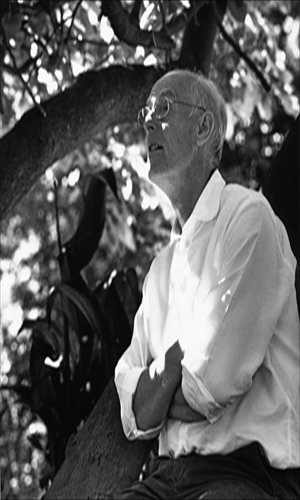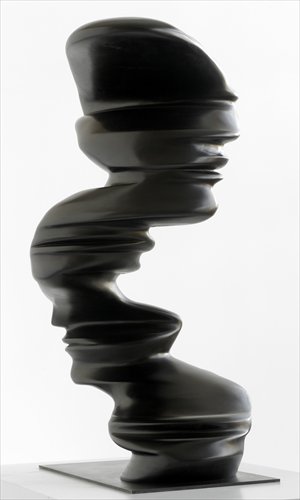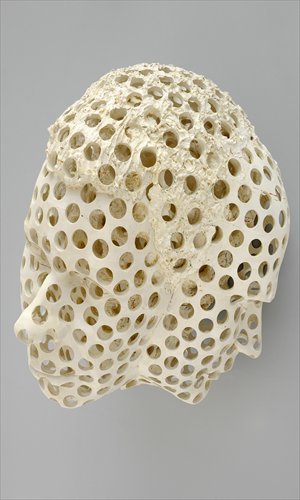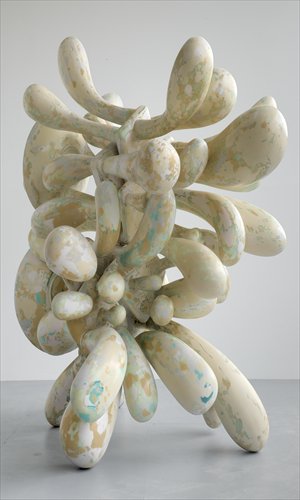If I was a sculptor ...
Despite his reputation as one of the world's leading sculptors, Tony Cragg candidly describes his artworks as "useless" and believes most people have little interest in what he does.
Today the 63-year-old Englishman is the director of the Kunstakademie Düsseldorf (The arts academy of Düsseldorf in Germany) and he has been involved in the art world since the 1970s. In 1988 he won the Turner Prize, the UK's premier art award, and he is the first living artist to be given a solo exhibition at the Louvre in Paris (2010).
"Every day in the world, there are probably billions of 'useful' things being made for different purposes," Cragg told the Global Times. "However, as a sculptor, none of my works are utilitarian, in that you can take them home to use as a chair or a cooker, for example. But there is freedom in this, and I don't believe that art should be utilitarian."
From now until November 18, 177 works by Cragg, including 50 sculptures and more than 100 drawings, will be displayed at the Himalayas Art Museum in Pudong New Area in Shanghai. This exhibition is being co-organized by the museum and the cultural and education section of the British Consulate General in Shanghai.

Different colors
In preparation for the show, Himalayas Art Museum's director Wang Chunjie, visited the National Galleries of Scotland in Edinburgh last autumn where Cragg's solo exhibition was being staged at the time.
"I saw several large sculpture works in different colors sited on the lawn outside the gallery," Wang told the Global Times. "From a distance, they looked like the kind of artificial hills made from stones that are very common in parks in China. But when I got up close to them, they were really beyond description and are unlike any daily objects we are familiar with or any living organisms. Seeing them gave me an indescribable sensation."
Cragg's agent Marianne Holtermann has curated the show and she told the Global Times that Cragg is interested in, and influenced by, many subjects including science, neurology, physiology and biology. She points out that through his sculptures, Cragg is always trying to present the idea of "interiors" to onlookers.
The shape of one piece called Sharing, which is made of white jesmonite (a composite material mainly used in fine arts, crafts, and construction), looks like the back of three heads punctured with holes. "Creating holes in the surface, Cragg's intention is to show the viewer what lies inside," said Holtermann.
Cragg expressed his interest in the human brain and mind. "There are many interesting things happening in our heads all the time but we can't see them, so we need to learn how our brain functions. And as a sculptor, when I'm playing with different materials in my hands and thinking about what to do with them, I'm actually reading my own mind."

Holtermann added that another group of bronze sculptures on show, and collectively called Bent of Mind, also reflects the artist's fascination with the human mind. They are all vertical structures, twisting upward from a curved or slanted base.
"Most of them look like huge giants with black coverings, and people also associate them with smoke from the chimney of a factory," Holtermann said.
Companions made of light green and sandy yellow-colored fiberglass has the appearance of rotting food. And its shape resembles a small table with its legs extended outwards.
Holtermann said: "According to Cragg himself, it reflects a kind of gastrointestinal motility (the ability to move spontaneously). When people are digesting food, the movements of their intestines and stomach probably looks like fingers or limbs trying to push their way out. In fact, I refer to this work as Cragg's self-portrait because several years ago he discovered that he had celiac disease which means he is allergic to wheat products. Curiosity about, and the exploration of, the human intestines and stomach inspired him to make this work."

Range of materials
Cragg is famous for using a wide range of materials in work, which in recent years have counted wood bronze and marble among them.
Earlier in his career, during the 1980s and 1990s, he mainly used recycled waste as his raw material in works such as Minister (steel), African Cultural Myth (plastics) and Complete Omnivore (plaster and wood). Minister, created in 1988, cemented his reputation and is a series of towering spires made from machine parts, such as industrial gear rods and discs, all delicately balanced to produce an unexpectedly elegant sculpture. The work will also be on display in Shanghai.
Cragg said: "Actually, you don't need to have specific places where you go to find materials, because you can find them everywhere. Sculpture is simply the basic study of materials, and investigating the possibilities of materials is more important than the material itself."
When asked about public sculptures in China, Cragg said that he can detect some nervousness on the part of local artists who perhaps feel constrained artistically and politically by what they "should" create.
"It is good that in China more and more people are beginning to get involved in art," he said. "The problem for artists is not to get distracted and not to worry about how to be successful or how to impress people. Being an artist is a great thing in itself; it means you enjoy doing things that most people are not interested in and it doesn't mean you are a failure."

Date: Until November 18, 10 am to 7 pm
Venue: Himalayas Art Museum
喜马拉雅美术馆
Address: 869 Yinghua Road
樱花路869号
Admission: 60 yuan
Call 5033-9801 for detail